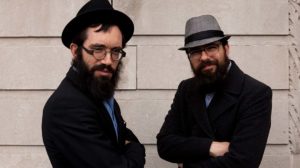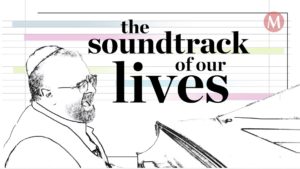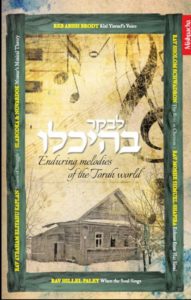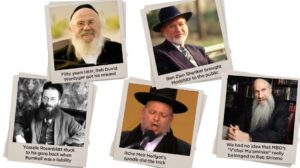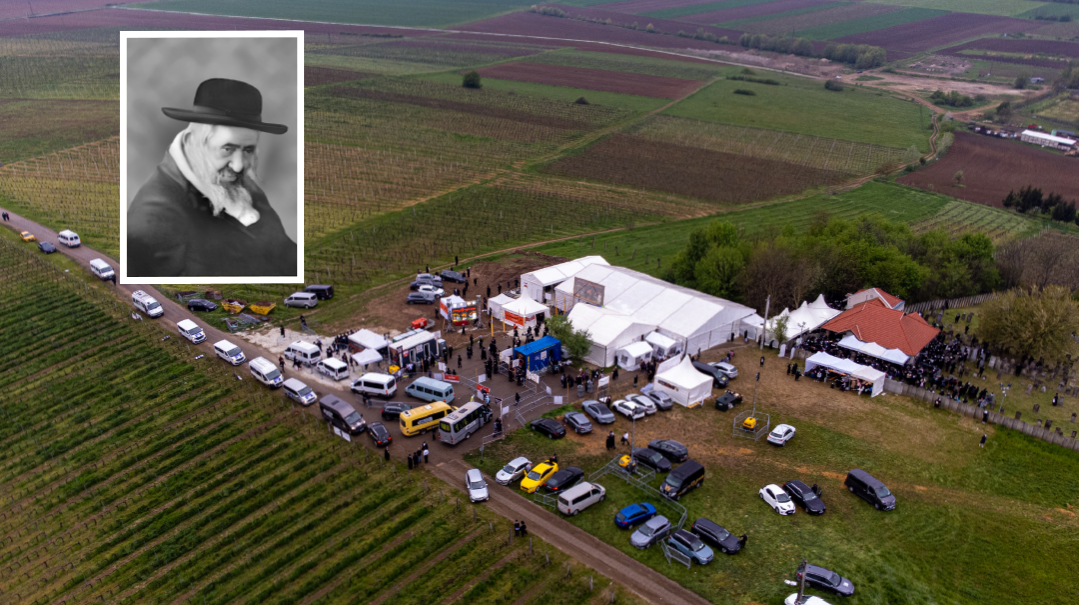Shaping Repentance from a Horn
| September 18, 2017What’s so special about Mr. Bengio’s shofros? Why are baalei tokeia scrupulous about purchasing only Mr. Bengio’s workmanship?
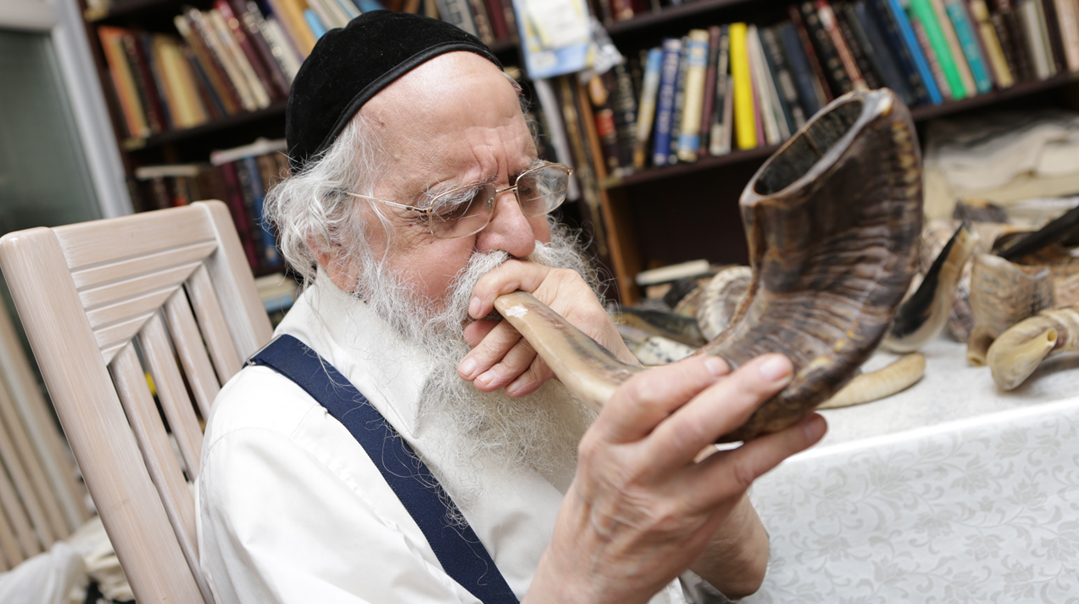
A handwritten note affixed to the front window of a nondescript house on Kyverdale Road in North London humbly informs visitors that talleisim ataros and shofros are sold on the premises. But the home’s simplicity and the note’s unpretentiousness belie the famous shofar-making factory housed within.
Past the door the undiscerning customer would still never guess that VIP clients the world over prize the creations produced here. But indeed rabbanim and gedolim of every stripe own of these shofars considered among the most mehudar in the world crafted by Mr. Yehuda Bengio.
Prices for a Bengio shofar start at £90 ($119). The most expensive shofar he’s ever produced came from a Jacob’s Ram a breed of sheep some believe existed at the time of the Patriarchs. That shofar cost £300 ($396). Either way his children admit that their father undercharges running his business more as a calling.
“I don’t take money from choshuve clients ” Mr. Bengio says. “Their brachos are worth much more.” Among those who have received his gifts — and bestowed their brachos — are the Tosher Rebbe ztz”l (Mr. Bengio’s son served as his gabbai) Rav Dovid Pinto and the rebbes of Pupa Satmar Klausenburg and Bobov.
Golden Hands
What’s so special about Mr. Bengio’s shofros? Why are baalei tokeia scrupulous about purchasing only from Mr. Bengio’s workmanship?
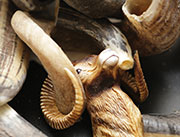
“I don’t take money from choshuve clients” Mr. Bengio says. “Their brachos are worth much more.”
First there is the shofars’ authentic natural form. Because there is a stringency to blow a horn that grew on an animal’s right side many shofar makers twist a left-side horn into a right direction. But poskim including the Minchas Yitzchak invalidate this and Mr. Bengio follows that ruling. Also most companies make the mouthpiece wider so that the shofar is easier to blow. Some poskim maintain that this change deems it passul. Mr. Bengio’s shofros are under the hashgachah of Dayan Aharon Dovid Dunner Rav of Adas Yisrael London.
Mr. Bengio shuffles down the creaky stairs to show a visitor his makeshift workshop a bare wooden succah-style hut whose walls are lined with enough well-worn steel instruments to put a dentist’s office to shame. Among the sophisticated machines there is a simple metal hanger mangled into a thin rod a tool that Mr. Bengio says is indispensable for cleaning out the shofar’s hollow.
He picks up a raw shofar and starts his work.
A drill is used to bore a hole at the horn’s tip which then becomes the mouthpiece and a hot iron rod widens the incision piercing deeper until it meets the hollow. (Before drills the hot iron alone was used to pierce the horn’s sealed tip a process that took much longer.) A heating apparatus is then inserted to clean the fat residue inside and smoke exits from the other side indicating its clearness. A belt-sander machine is used to smoothen the mouthpiece and much like a nail file gives the shofar its overall sheen.
Mr. Bengio generally buys his ram’s horns from Morocco but he says Australian rams also produce exceptional shofars. A local esrog dealer who travels to Morocco for arba’as haminim brings them over for him. Watching him work hunched over his white beard glowing in the dark space I can close my eyes and pretend I am in Rabi Yochanan HaSandlar’s studio. And though he can’t claim to trace his family’s shofar-making skills to the time of the Tanaaim Mr. Bengio can say shofar making is a family affair.
Sacks Full of Horns
Mr. Bengio was practically born with the proverbial shofar in his mouth. He grew up in Tangiers, where his father, Reuven, a carpenter by profession, performed the sacred craft.
The Bengios came to Morocco from Spain after the Inquisition. Chacham Yehuda Bengio, Mr. Bengio’s great-uncle (and namesake and mohel) was a famed mekubal and dayan of the community. The Chacham’s son-in-law Reb Chaim, also a Bengio, was the rebbi in cheder, an institution that was housed in the Bengio Shul, so called because the Chacham sat and learned there day and night.
Born in 1934, Yehuda recalls a blissful childhood. The king of Morocco forbade his people to harass the Jews, resulting in excellent relations between the Jews and the local non-Jewish population. Yehuda’s mother, a dressmaker, sewed the traditional Arab stoles and togas for the Arab women, who patronized her happily.
“My mother was generally known in the whole area as ‘the tzadeikes.’ She was always going around helping people,” shares Mr. Bengio. His mother was niftarah when he was a bochur in yeshivah, far away from home. His father later remarried.
Something else Yehuda remembers: There were no banks in his youth, so whenever the Moroccans traveled, they entrusted their money to a Jewish neighbor. Yehuda shares a memory in which an Arab came to a Jew upon his return home to collect his cache, but the Jew denied ever receiving the money. The Moroccan approached the Chacham for his sage advice, as the non-Jews were wont to do. The Dayan told him, “Leave it to me and I will get your money back.”
He called up the Jew and said, “I want to give you good advice. If a Moroccan leaves you money and then asks for it back, say that he never gave you anything and keep it for yourself.”
“Ha!” confided the Yid. “I just did that.”
Needless to say, the Dayan compelled him to return the money to the Moroccan.
In general, the Jews and non-Jews interacted cordially, so that even as a five-year-old, Yehuda went by himself to the shuk to buy the family’s favorite treats, garinim, or watermelon seeds.
Yehuda remembers Arab farmers bringing his father sacks full of ram horns to his carpentry workshop before Rosh Hashanah. His father paid them and then toiled over them for weeks with tools of old, turning those raw horns into beautiful, blasting shofros.
In those days, there was no water in the house, nor electricity. Since there was no refrigerator, they drank goat’s milk every morning — squeezed fresh at home straight into bowls by peddling farmers.
“After Shacharis,” he recounts, “we would come home to our cups of warm milk. Water I would schlep from the local well. And we grew vegetables in the backyard. My mother would pick them and make a fresh salad every morning.”
As for cooking, Yehuda describes two kinds of heating apparatuses — tanur v’kirayim, exactly like the ovens described in the Gemara. One oven was a brick apparatus in the wall that was used for baking and cooking during the week. The other, a portable one, was crafted by his mother from clay and straw. It was kept close to the dinner table and used for reheating food. The coal was put inside through a hole on the side, and his mother would blow the coals and spread the heat. On Shabbos, topped with a sheet of metal, it became a blech.
There was a special traditional Shabbos beverage called machia, a whiskey made of wild figs. After they moved from Spain, the extended Bengio family produced and sold the traditional drink.
Just as they came to town to sell ram’s horns, the Arabs used to bring sacks of very bitter figs that were inedible raw, but delectable once processed. Yehuda was tasked with emptying the sacks of figs into huge clay vats, covering them with water, and letting them boil for a long time to acquire the relished Shabbos treat.
Yehuda says that people ate much healthier in those days and attributes the long life spans of the townsfolk to their diet. Indeed, his father was niftar at the ripe old age of 95. “The typical Moroccan diet consisted of fish and vegetables. Lots of vegetables. No one ate meat during the week. For Shabbos, we would get a chicken from the market, shecht it, put it into the soup, and use the feet in the cholent. That was our only taste of chicken all week.”
Life in London
After Israel’s War of Independence in 1948, the local Muslims started to vent their anger at the Jews and the situation deteriorated rapidly. Israeli government representatives came to Morocco to offer the Jews safe haven, but the Bengio family was extremely skeptical about their intentions, having heard stories about the harm done to other Jews in the new state.
“I remember standing at the sea port of Tangiers and seeing them dragging boys onto the boat and trying to coax as many more as they could, promising them the world,” says Yehuda.
His mother went to his father’s uncle, the mekubal, to ask if she should send Yehuda and his brother to Eretz Yisrael. “The mekubal said no, we had no future there. We should go to learn Torah in yeshivah in England.”
In 1950, at ages 16 and 14, brothers Yehuda and Avraham voyaged to England, starting in Sunderland Yeshiva in Gateshead. Yehuda and a friend spent summer bein hazmanim in the London yeshivah of Rav Moshe Schneider, and once merited to hear Rav Aharon Kotler speak there. “We had no money for train fare, so we hitched a ride to London on any trucks headed south, asking them to take us as far as they were going, before dropping us off for our next hitch.”
Throughout the stay, Rav Schneider and his wife displayed tremendous hachnassas orchim; his wife would cook at the gas range and the Rosh Yeshivah would help himself to the pots to serve the bochurim in person, imparting divrei Torah as he closed the distance between the stove and the table.
“I’ll never forget one of those shmuessen. He told me that the reason the Yidden don’t have parnassah is because they don’t recite kapitel kaf-gimel (23). The kapitel has 57 words, the gematria of ‘zan,’ meaning provision, and it is a segulah for parnassah to say it before bentshing.”
In 1955, Yehuda moved to London to learn shechitah. He lodged in a building for displaced bochurim who had come from war-torn Europe. There they would learn half the day, and study a trade the other half. “During that time, I became a ben bayis of the Leizher Rav, Rav Chaim Yitzchok Weingarten, who took us under his wing like a father, just as he did for the many broken and orphaned bochurim who sought his guidance and warmth. He was a tzaddik. I was the gabbai of his shul. Every day, I would fill the mikveh with cold water and heat it up with an electric contraption.”
Soon after, Yehuda, of authentic Sephardic origin, married an Ashkenazi girl, the daughter of Rav Chaim Friedman of Eitz Chaim Yeshiva, a shidduch arranged by Rav Feivish Schneebalg, rav of Vizhnitz. (Today all the Bengios’ six children are chassidim.) After marriage, he worked as a shochet for the London Beth Din, starting off handling chickens, until a vacancy opened in the cattle department. At the end of his long work day, he would saw off the horns from the shechted animals and take them home as booty at a pound a piece.
“I shechted around 600 rams a day,” he says, meekly blowing his own horn, “and came home every night with two huge sacks of horns.”
Do the math: What does a shofar-maker’s son do with so many horns? Of course, he makes shofros.
Labor of Love
You can find shofros in all corners of the Bengio home: from the stovetop to the sink drainer, piled high on tables, and in bowls. Indeed, Mr. Bengio’s younger children lived and breathed the shofar-making process.
Coming home from school to the aroma of “chicken soup, but not quite chicken soup,” recalls daughter Mrs. Rochel Messinger, was a warm, welcoming feeling, one that jolted her into teshuvah mode sometimes as early as Tammuz.
“I remember coming home from yeshivah,“ shares Shmuel Yitzchok, the youngest son, “and hearing my father drilling the shofar and then blowing, drilling again and blowing, until it emitted a perfect sound. I once watched how my father was engrossed in drilling and his beard got caught in the drill bit, but he plowed on, careful that the drill should not veer off to the side.”
Though they lost their privacy at home during shofar season, the children recognized that their father was involved in klei kodesh. “When a rav would make a private appointment,” recalls daughter Mrs. Yocheved Stein, “he would send us upstairs. We never felt resentful, rather privileged. In the same way, our mother, whose kitchen was practically invaded by the pots of cooking shofars, never uttered a complaint about her stove top being unavailable or the disarray of having piles of shofars in every which corner, waiting to be tended to. Instead, she took great pride in that ‘mess’ and supported him as his round-the-clock secretary.”
Mrs. Stein says that, their revered clientele notwithstanding, the entire operation was done without fame or fanfare so that even their teachers remained clueless. “There were days that we did not manage to do our homework since all the rooms in the house were used for the shofar sales, and there was literally not a corner to work in. It would never have occurred to us to exploit the shofar season as the reason; our parents did it with tremendous tzniyus.”
Shofar, Shofar, Everywhere
As we pass through the kitchen again, I see a sewing machine that I assume belongs to his wife, but I am wrong. Like his mother, who was a seamstress, Mr. Bengio sews the ataros on talleisim and strings onto the tzitzis, including blue techeiles thread.
But it is the shofar that captures his imagination.
He fetches a bag loaded with a tangle of shofros from London and regales me with their different stories. “This one came from an animal with four horns, this one from six horns, this one is not kosher for blowing because it is straight, and this one is too short — it must protrude from both sides of the baal tokeia’s clenched fist. This one is from a goat, this one from an ox. An ox horn is not kosher.”
Why would he hoard this half-passul trove? I ask.
“I give shiurim on the subject.”
With each tidbit of information, he demonstrates the respective shofar’s sound or lack thereof with a quick puff. The short ones, for example, barely emit a hoarse sputter; there is no corridor for the sound to form itself. A shofar with a thick wall will produce a thick sound, while a shofar with a thin wall will emit a soft one. Straight ones are not kosher since a shofar must be bent, kafuf, like a Yid, in submission to the Eibeshter. An ox horn cannot be used as a shofar since it is called a keren — a horn, not a shofar. It is also forbidden as it recalls the sin of the eigel.
When he takes out the last shofar, he proceeds to blow the thirty tekios with limpid fluidity. Fortunate are the elderly members of the Schonfeld Square Shul, where this erlicher Yid serves as the baal tokeia.
He then tells me people’s varied preferences. Some like it “right,” some like it white, (as in the shade), and some like the long, twisted antelope horn customarily used by Yemenites on Rosh Hashanah. The general custom, however, is to blow a shofar from a ram, to remember the akeidah.
Wrapping up our interview, Mr. Bengio shares a vort. “Dovid Hamelech writes in Tehillim that the reason we blow the shofar on Rosh Hashanah is a chok, a statute. Bnei Yisaschar explains that the mekatrigim (accusers) stir up a fuss and challenge Hashem, ‘How can you help the Yidden with whatever they want and write them in the Book of Life?’ Hashem answers them, ‘I will do everything they need. I will forgive them and write them in the Book of Life without any reason, for they keep my chokim without asking questions.” —
(Originally featured in Mishpacha Issue 678)
Oops! We could not locate your form.


